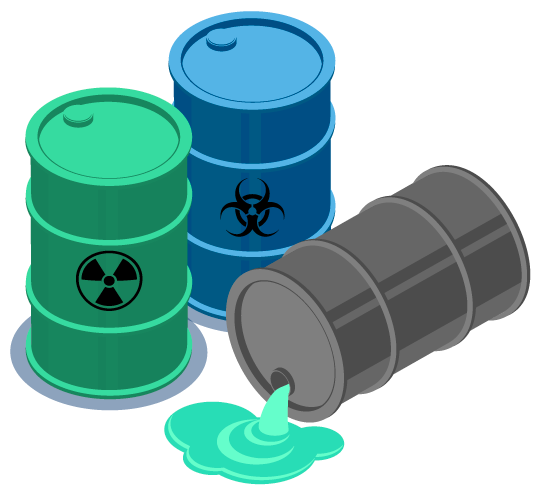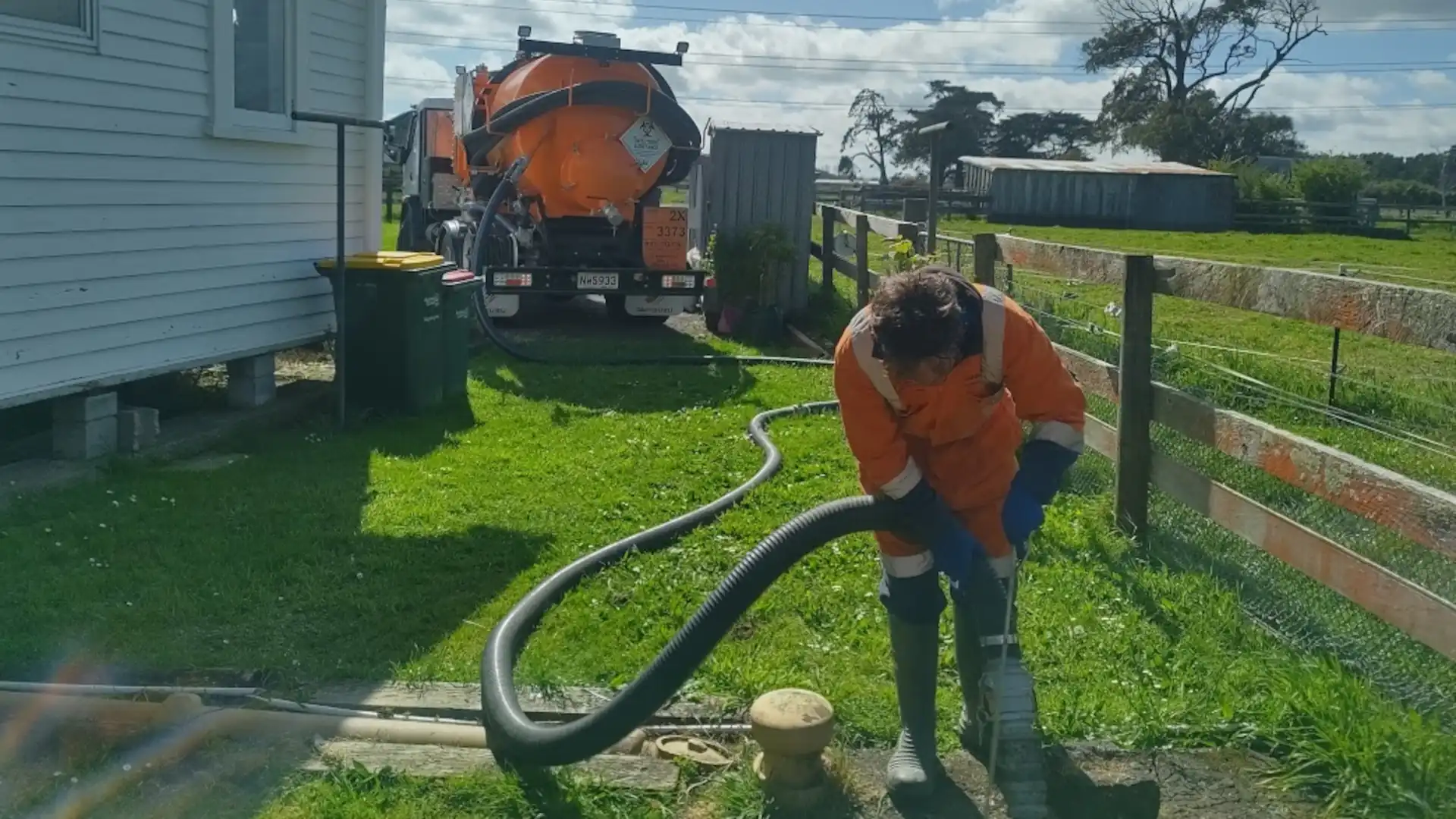How Liquid Waste Disposal Functions: A Thorough Review of Techniques and Technologies Utilized

Overview of Liquid Waste Kind
The intricacy of liquid waste types necessitates a detailed understanding of their characteristics and ramifications for disposal. Liquid waste can generally be categorized into a number of types, including industrial, metropolitan, agricultural, and contaminated materials. Each group exhibits distinctive residential properties, needing details monitoring strategies to alleviate ecological and health and wellness threats.
Industrial liquid waste originates from making procedures and typically includes a variety of impurities, such as hefty metals, solvents, and natural compounds. Community fluid waste, mainly comprising wastewater from families and business establishments, has natural matter, nutrients, and pathogens (industrial wastewater treatment). Agricultural fluid waste, including drainage from farms, might consist of fertilizers, pesticides, and animal waste, posing threats to water high quality and communities
Hazardous liquid waste is characterized by its poisoning, reactivity, or possible to create injury. Comprehending these varied liquid waste types is crucial for creating reliable disposal techniques and making certain conformity with ecological policies.
Physical Treatment Techniques

Testing is the preliminary action, where larger particles and particles are eliminated from the fluid waste making use of displays or grates. This procedure secures downstream devices from damage and makes sure smoother operation. Complying with testing, sedimentation makes use of gravitational force to different solids from fluids. In sedimentation containers, much heavier fragments resolve at the base, forming a sludge layer, while the made clear fluid can be further dealt with.
Purification is another essential approach that entails passing the fluid via porous products, such as sand or membrane layers, to catch smaller bits. This step boosts the high quality of the liquid, making it ideal for subsequent therapy procedures.

Chemical Treatment Strategies
Chemical therapy methods are crucial for effectively taking care of liquid waste, especially in resolving liquified and colloidal impurities that physical methods might not sufficiently get rid of. These methods make use of various chemical representatives to neutralize, precipitate, or transform harmful materials into less hazardous types.
One common technique is coagulation and flocculation, where chemicals such as alum or ferric chloride are included in advertise the aggregation of put on hold fragments. This procedure enhances sedimentation, permitting for much easier removal of the resulting sludge. Additionally, oxidation procedures, employing representatives like chlorine or ozone, are used to break down intricate organic substances and check my reference virus, rendering the waste safer for discharge or additional treatment.
Neutralization is another vital method, which readjusts the pH of acidic or alkaline waste streams to neutral levels, stopping possible harm to downstream systems and the atmosphere. Moreover, progressed oxidation procedures (AOPs) utilize mixes of oxidants and ultraviolet light to degrade relentless toxins, accomplishing a higher degree of therapy performance.
Organic Therapy Processes
Biological treatment procedures play a crucial function in the administration of fluid waste by utilizing microbes to decompose raw material and minimize contaminant degrees. These procedures can be broadly categorized into anaerobic and aerobic therapies, each using details microbial neighborhoods to attain efficient waste destruction.
Cardio treatment includes making use of oxygen to help with the breakdown of organic products by germs. This process is frequently implemented in activated sludge systems, where oygenation containers offer a favorable setting for microbial growth, causing the oxidation of natural toxins. The resultant biomass can be separated from treated effluent with sedimentation.
On the other hand, anaerobic treatment takes place in the lack of oxygen, relying on different germs to damage down organic issue. This method is particularly useful for high-strength waste, as it produces biogas, a renewable resource source, while decreasing sludge manufacturing. Technologies such as anaerobic digesters are frequently utilized in metropolitan and industrial applications.
Both cardiovascular and anaerobic organic treatments not just lessen the environmental impact of liquid waste but likewise promote source recuperation, making find out here them crucial components of sustainable waste monitoring techniques. Their efficiency, flexibility, and effectiveness support their extensive implementation throughout numerous fields.
Emerging Technologies in Disposal
Innovative techniques to liquid garbage disposal are rapidly progressing, driven by improvements in innovation and an increasing emphasis on sustainability. Among these arising technologies, membrane bioreactors (MBRs) have gained traction for their capacity to integrate biological treatment with membrane filtration, causing premium effluent that can be recycled in numerous applications. MBRs enable smaller sized footprints and much more efficient operations contrasted to standard systems.
One more promising advancement is making use of anaerobic digestion incorporated with nutrient healing technologies, which not only treats fluid waste but also generates biogas and recovers valuable nutrients like nitrogen and phosphorus. This twin advantage improves resource performance and lowers ecological influence.
In addition, progressed oxidation procedures (AOPs) are being taken on for the degradation of intricate natural toxins. These techniques use effective oxidants and stimulants to damage down pollutants at the molecular level, providing an extremely effective service for tough waste streams.
Furthermore, the combination of artificial intelligence and artificial intelligence in waste monitoring systems is optimizing functional efficiency and anticipating upkeep, resulting in lowered expenses and boosted environmental compliance. These modern technologies reflect a considerable change towards even more effective and sustainable fluid waste disposal techniques.
Conclusion
Finally, efficient fluid garbage disposal demands a comprehensive understanding of various techniques and technologies. The integration of physical, chemical, and biological therapy techniques makes sure the effective administration of diverse waste kinds. Furthermore, the emergence of cutting-edge innovations improves therapy efficiency and promotes sustainability in waste monitoring techniques. By constantly advancing these methods, it becomes possible to address the growing challenges related to fluid waste, eventually adding to environmental management and resource recuperation.
Fluid waste disposal is a critical aspect try this out of ecological monitoring, needing a comprehensive understanding of numerous methods and modern technologies customized to various waste kinds. Liquid waste can broadly be categorized right into numerous kinds, including industrial, local, farming, and unsafe waste. Agricultural fluid waste, including overflow from ranches, might contain plant foods, chemicals, and pet waste, positioning dangers to water top quality and ecosystems.
Different physical treatment techniques play a vital role in handling fluid waste efficiently - industrial wastewater treatment.In final thought, effective liquid waste disposal necessitates a comprehensive understanding of numerous methods and innovations
Comments on “Safe and Lasting Liquid Waste Disposal: Your Go-To Company”